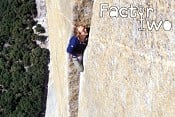In reply to andrew breckill:
> One thing I didn't ask originally but is part of the question I wanted to ask is when/how do people make the call go/no go? what tips the balance? In my youth I ignored all danger signs as I sought out risk (not just in climbing but that's another story) I know some might scoff at the idea of a kind of risk assessment, does anyone do it before venturing out even just a quick mental weigh up the odds? I do a initial one before setting out for the drive and another when I get to the venue, I have turned back on occasion, but I wonder if age is now making me too cautious.
It's a continuous process; in the weeks throughout the season, understanding the evolution of the snowpack. In the days before the outing, understanding recent weather and prevailing conditions. The night before, a stock-check of the latest avalanche forecast, weather forecast, snow history and plans. On the hill, observation of current conditions, elements of terrain, experience and condition of partners, weather, progress according to plan etc etc.
For my personal take on it, one can never completely remove the risk (except by only going out in summer...). I see it as a combination of risk factors, for example the weekend before last I was out by myself and had the following:
About to cross a 35 degree or so snow field
On a category 2/3 risk aspect
On a convex slope
Above a cliff band
In a whiteout with windblown snow rapidly covering my tracks
By myself
There's 6 risk factors there that added up to a change of plan for my day. However, this weekend, I had the following:
At the top of a category 3 risk aspect
45 degree slope of windblown snow
On a concave slope
No terrain trap / no-fall terrain
In good weather
With a partner
That's 2 risk factors - I skiied it and had a whale of a time. By the forecast alone, the latter was the more dangerous, but by combination of risk factors the former was by far the more risky. Don't get my wrong - I could have crossed the dodgy slope before and been fine, and I could have been avalanched on the less-dodgy slope; however I hope this shows at least what goes through my mind (for better or for worse - I have no formal training).
Post edited at 21:08









